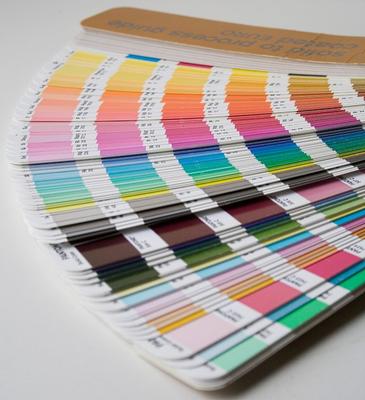Deciding on interior paint colors for you home isn’t a life-altering experience, but it can certainly be stressful and intimidating. It’s disheartening to spend an entire weekend painting a room and having it turn out lighter, darker or brighter than you imagined, and while people always try to wait and see if it lightens up, once it’s dry, the wrong color won’t change over time. And yes, you can paint over it if you hate it, but do you really want to go to the expense and effort of doing this job twice?
Here are a few suggestions on how to choose the right color so that you end up with results that you love and that you’ll be happy to live with for a long time.
Colors set a Mood
Mood is greatly affected by color. Cool colors like blues and greens promote relaxation, whereas deep hues like reds and yellows are warming and energizing. Neutrals provide a background that is easily adapted to any style and accessories of any color. Bright colors in accessories will move front and center against a neutral backdrop and a neutral backdrop allows you to change accessories with ease as often as you like.
Don’t think of neutral as only white or beige; creamy pastels with a hint of color, such as yellow, pink, rosy beige, blue or green, work with accents and patterns of any style. Gray is an often overlooked neutral that provides a calming background whether your accents are bright or subdued.
Using Paint to Connect Walls and Rooms
Many contemporary homes have open living spaces that visually connect to each other. Keep color continuous on continuous walls and add nuances of color where walls turn or break. A series of shocking color changes in an open floor plan can be jarring so choose bold colors for walls that will serve as focal points and keep continuity of color elsewhere.
Using slight differences in hue one room to another can keep things visually interesting with looking chaotic. Unite rooms with slight color changes by keeping the wood trim colors consistent.
Choosing Color for a Smaller Room
Generally speaking, a small room will appear smaller and darker in darker colors. But you can have color in a small room by using lighter shades of your preferred color. Bring in bolder colors in accents like throw rugs, wall hangings, lampshades and pillows. Add a wall mirror with a bold frame to add light and spaciousness. Let it reflect the natural light from a window or place two mirrors opposite each other to visually expand a space. If the window in your room looks on a stunning outdoor view, let the mirror reflect that view back upon itself while adding the illusion of a second window.
Color Trials are Better than Do-Overs
Once you’ve narrowed color possibilities down to two or three choices, try it out before painting the entire room. Most paint stores will mix quart size containers.
Paint a 2-by-2 foot square of each color next to each other on different walls and watch how these colors change as light changes in the room throughout the day. It will be easier to make a final decision if you live with the colors for a few days. Then prime over your color blocks and color your room with a hue that you know you’ll love.
Choosing Paint Colors Just Got Easy!


